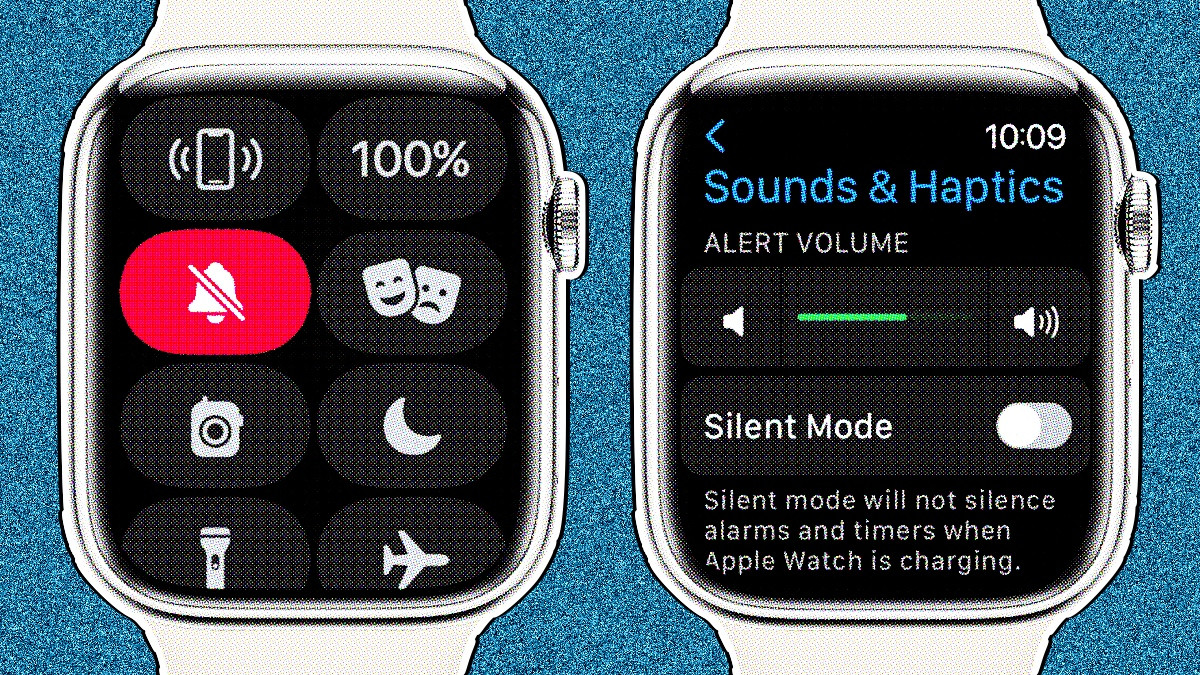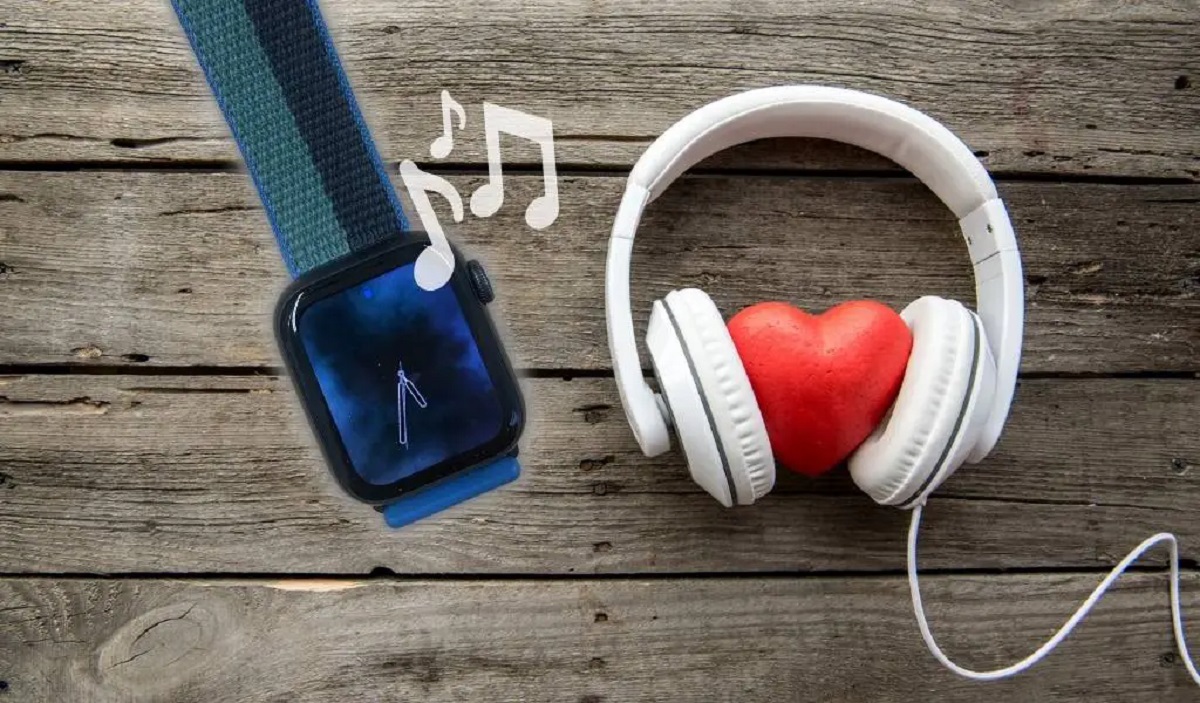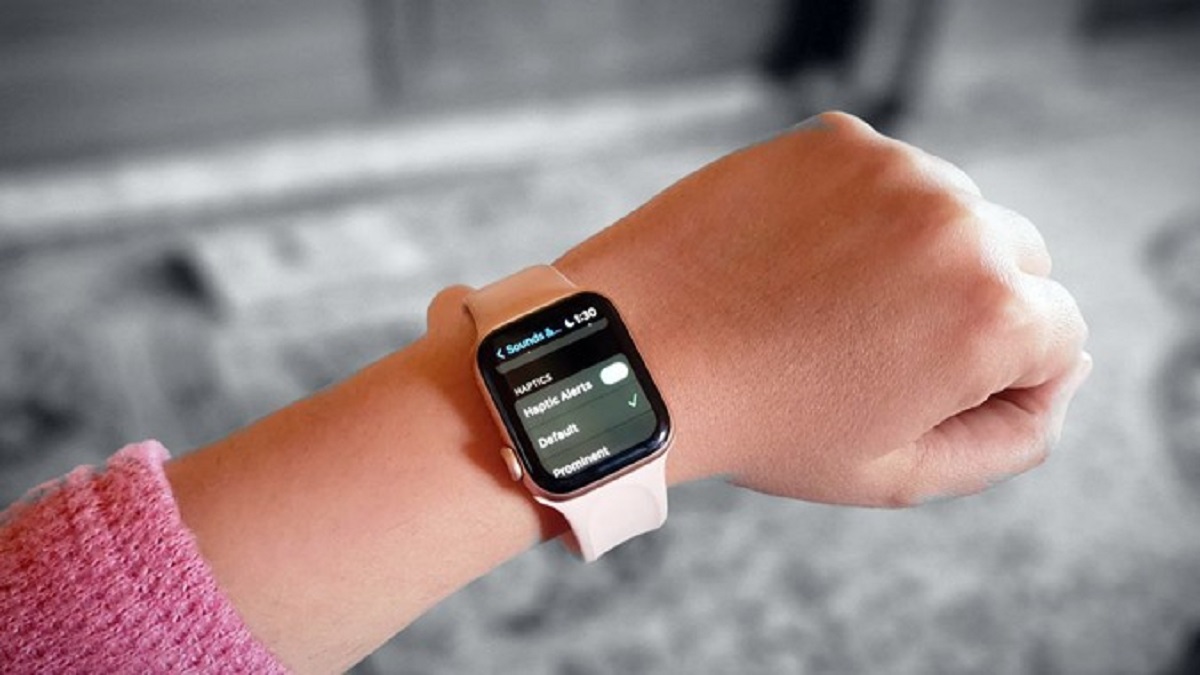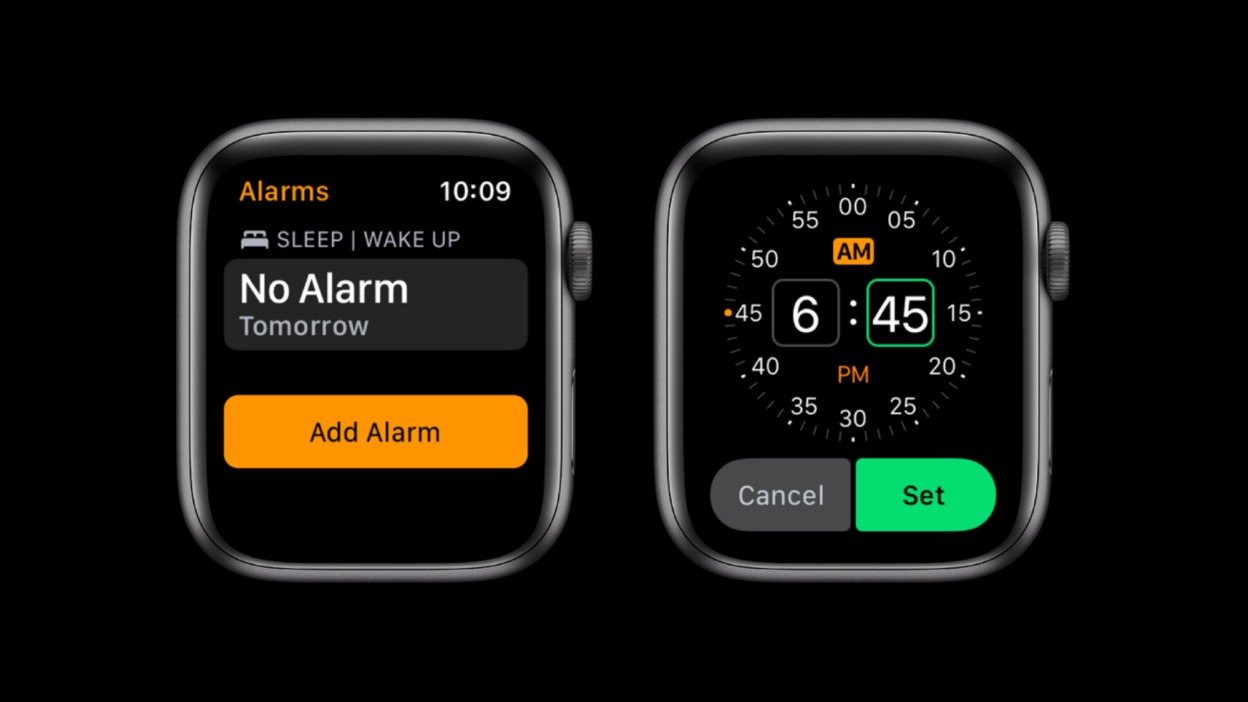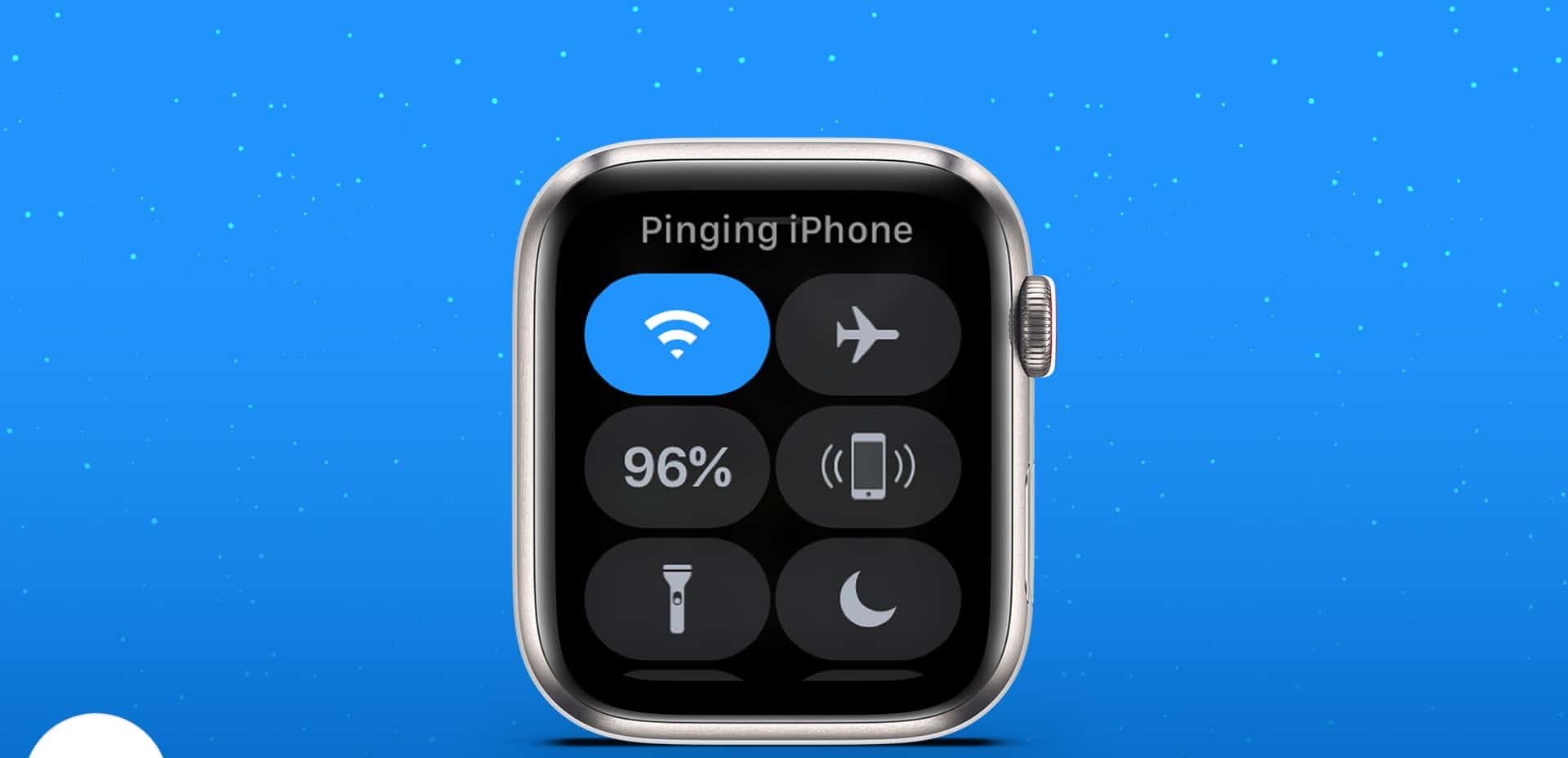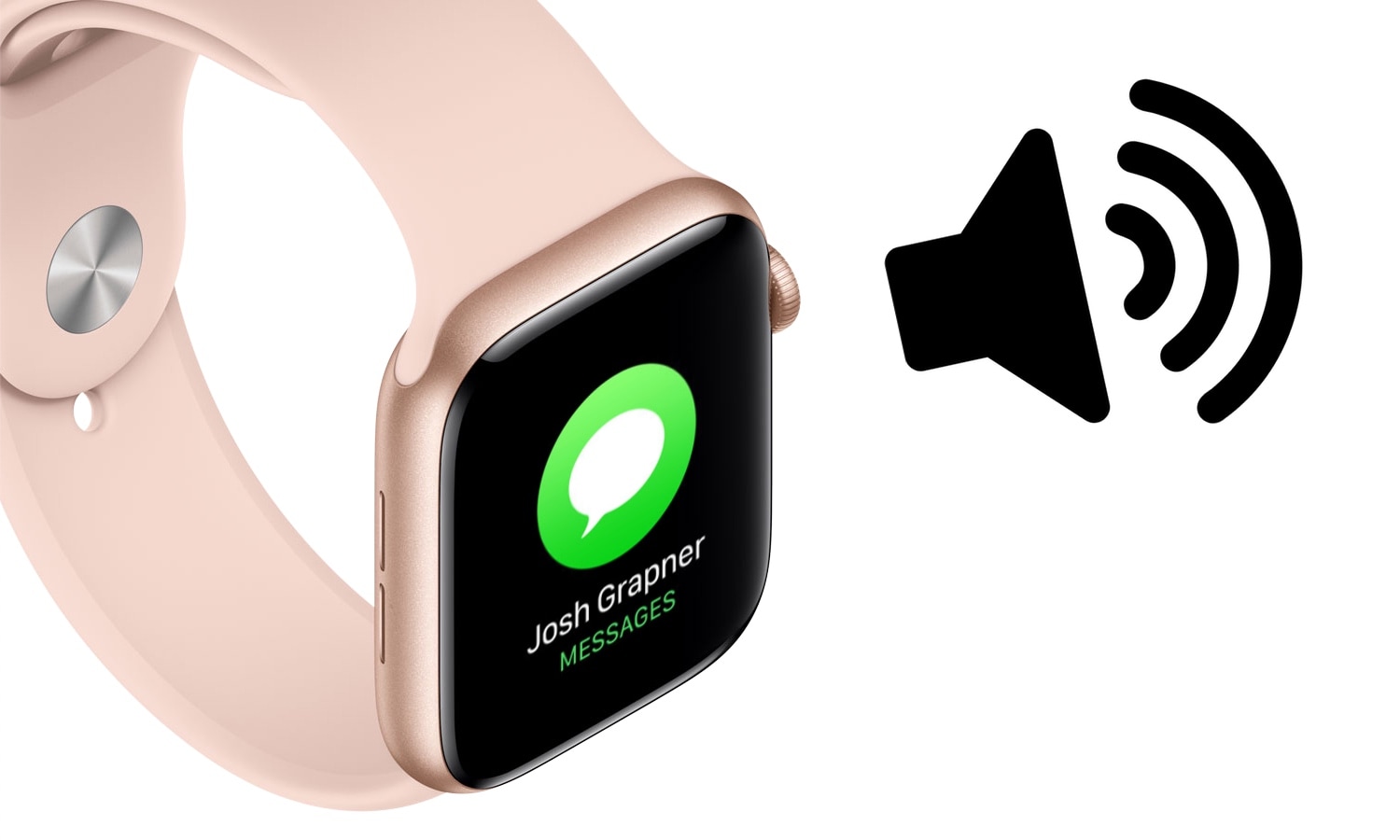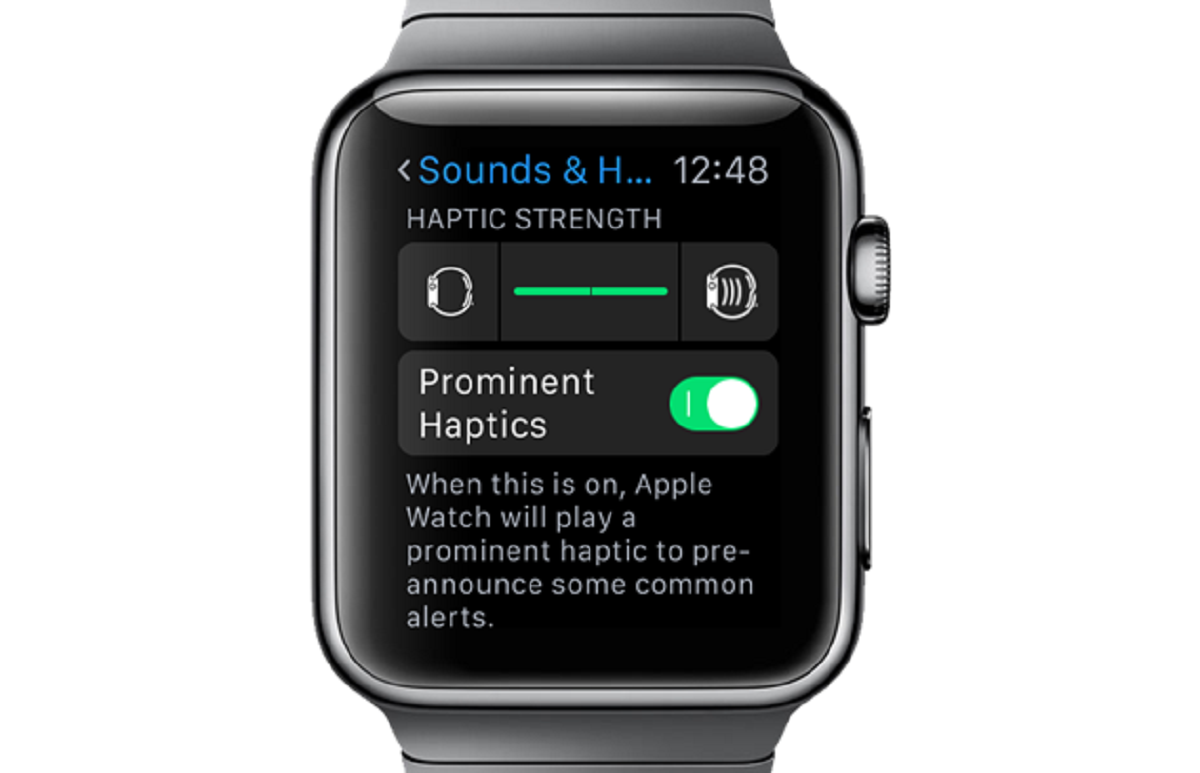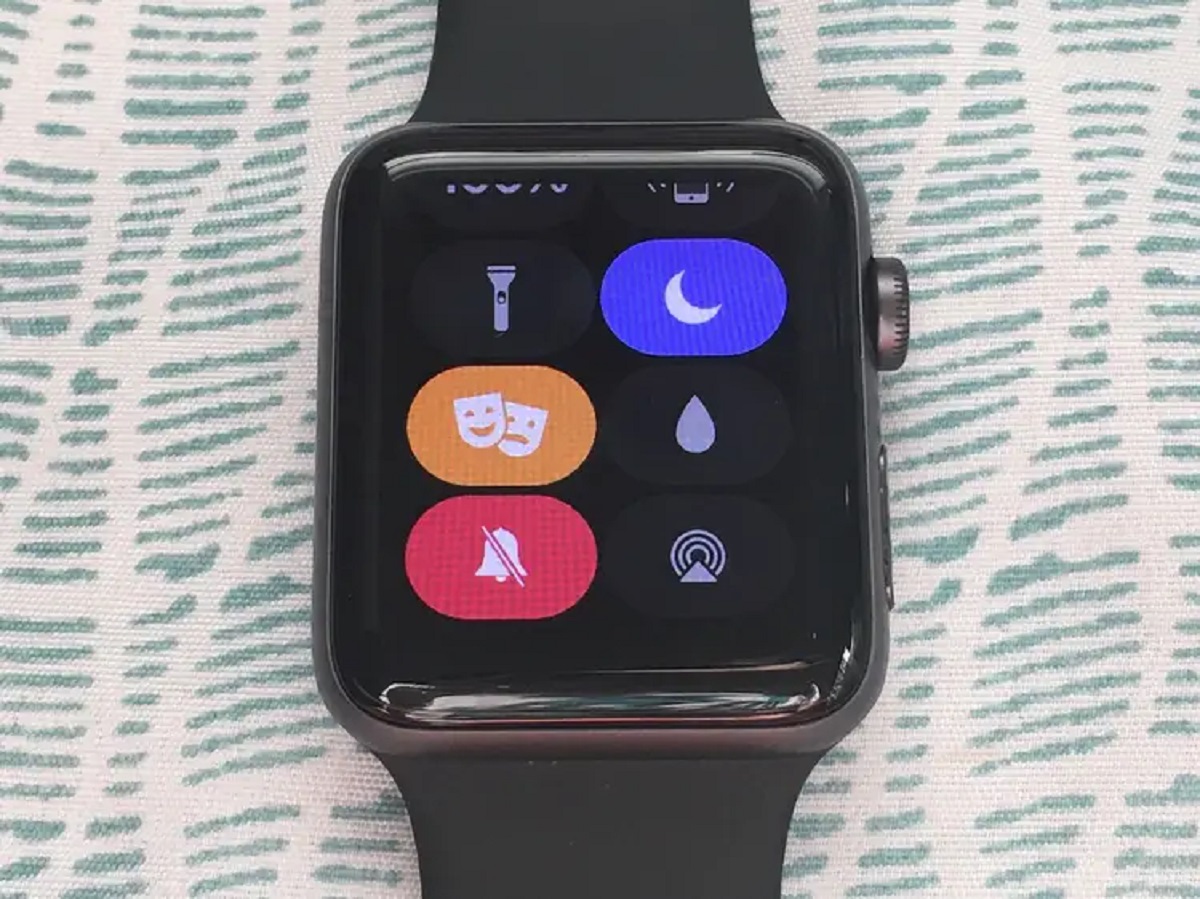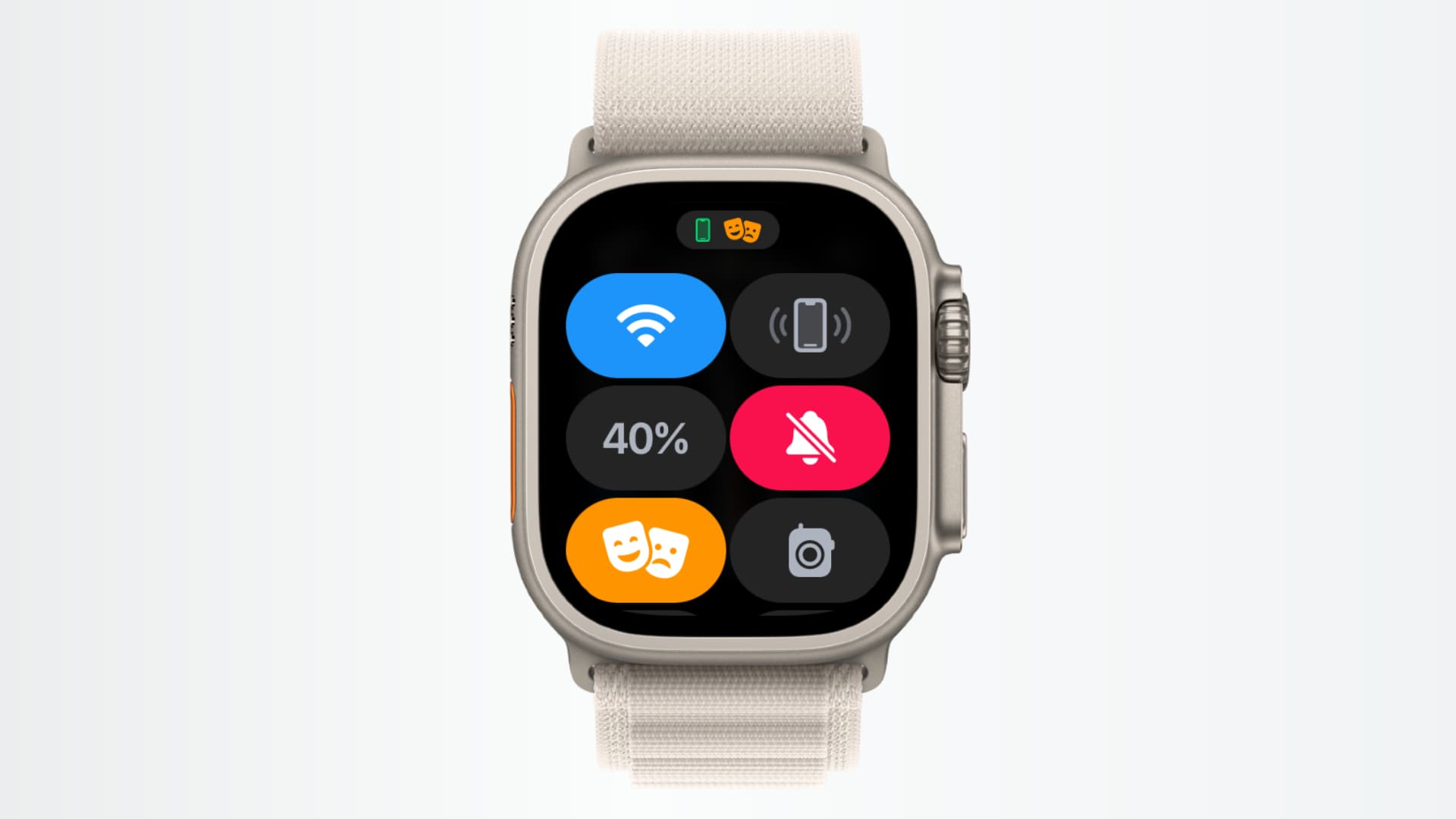Introduction
Welcome to the world of the Apple Watch, a sleek and sophisticated wearable device that not only keeps you connected but also adds a touch of style to your everyday life. One of the standout features of the Apple Watch is its ability to deliver discreet notifications through haptic feedback. With this feature, you can receive important alerts and messages without using sound or visual cues.
Whether you’re in a meeting, at a noisy restaurant, or simply want to keep your notifications private, the vibration function on your Apple Watch can be a lifesaver. In this article, we will guide you through the process of getting your Apple Watch to vibrate and help you customize the vibration alerts to suit your preferences.
The vibration settings on your Apple Watch work in tandem with the settings on your paired iPhone. You can adjust and customize the vibration intensity, pattern, and duration to ensure that you never miss an important notification. Additionally, we will address common issues and troubleshoot any problems you may encounter with the vibration feature.
So, whether you’re a seasoned Apple Watch user or just starting your journey with this remarkable device, join us as we explore the world of haptic feedback and discover how to harness the power of vibrations on your Apple Watch.
Understanding the Vibration Settings on Apple Watch
Before we dive into customizing the vibration alerts on your Apple Watch, it’s important to understand the vibration settings and how they work. By default, your Apple Watch is set to mirror the vibration settings on your paired iPhone. This means that any changes you make to the vibration settings on your iPhone will be reflected on your Apple Watch.
To access the vibration settings on your iPhone, open the Apple Watch app, navigate to the My Watch tab, and tap on Sounds & Haptics. Here, you will find options to adjust the vibration intensity for calls, alerts, and notifications. You can choose between three predefined vibration patterns – Default, Heartbeat, and Rapid. You also have the option to create custom vibrations for specific contacts or apps.
On your Apple Watch, you can access the vibration settings by opening the Settings app and tapping on Sounds & Haptics. From here, you can adjust the haptic feedback strength and enable or disable prominent haptic alerts. Enabling prominent haptic alerts will make your Apple Watch deliver a stronger haptic feedback for important notifications.
It’s important to note that not all apps support custom vibration alerts. Some apps may only offer the default vibration pattern, while others may allow you to choose from a predefined set of patterns. However, for notifications from built-in Apple apps like Messages, Mail, and Calendar, you will have more control over the vibration alerts.
In the following sections, we will explore how to check and customize the vibration settings on your iPhone and Apple Watch. So, let’s dive in and unleash the full potential of vibrations on your Apple Watch.
Checking the Vibration Settings on iPhone
Before customizing the vibration alerts on your Apple Watch, it’s important to ensure that the vibration settings on your iPhone are properly configured. By default, your Apple Watch will mirror the vibration settings on your iPhone. Here’s how you can check and adjust the vibration settings:
- Open the Apple Watch app on your iPhone.
- Navigate to the My Watch tab.
- Tap on Sounds & Haptics.
- Here, you will find options to adjust the vibration intensity for calls, alerts, and notifications.
- Tap on each option to choose a vibration pattern that suits your preferences. You can select between Default, Heartbeat, and Rapid.
- If you want to create custom vibrations for specific contacts or apps, scroll down to the Custom section and tap on Create New Vibration.
- Follow the prompts to create a unique vibration pattern by tapping on the screen.
- Once you’re satisfied with the pattern, tap on Save in the top-right corner to assign it to a contact or app.
Remember, the changes you make to the vibration settings on your iPhone will be reflected on your Apple Watch. So, if you want to ensure that your Apple Watch vibrates in a certain way, make sure to adjust the vibration settings on your iPhone accordingly.
Now that you’ve checked and customized the vibration settings on your iPhone, it’s time to explore how to personalize the vibration alerts on your Apple Watch. In the next section, we will guide you step-by-step through the process of customizing vibration alerts for individual apps and contacts.
Customizing Vibration Alerts on Apple Watch
One of the great features of the Apple Watch is the ability to customize the vibration alerts for individual apps and contacts. By personalizing the vibration patterns, you can easily identify incoming notifications without even looking at your watch. Here’s how you can customize vibration alerts on your Apple Watch:
- On your Apple Watch, open the Settings app.
- Scroll down and tap on Sounds & Haptics.
- Under the Haptic Alerts section, you will see a list of built-in Apple apps that support custom vibration alerts.
- Tap on the app for which you want to customize the vibration alert.
- From here, you can select one of the predefined vibration patterns or create a custom vibration.
- If you want to create a custom vibration, scroll down and tap on Create New Vibration.
- Tap on the screen to create a unique vibration pattern. You can tap and hold to create longer vibrations.
- Once you’re satisfied with the pattern, tap on Save in the top-right corner to assign it to the selected app.
Similarly, you can customize the vibration alerts for individual contacts. Here’s how:
- Open the Phone app on your Apple Watch.
- Scroll down and tap on Contacts.
- Select the contact for which you want to customize the vibration alert.
- Tap on Edit in the top-right corner.
- Scroll down to the Ringtone & Haptic section and tap on Vibration.
- Choose one of the predefined vibration patterns or create a custom vibration as mentioned in the previous steps.
- Once you’re done, tap on Done to save the changes.
Customizing vibration alerts on your Apple Watch allows you to have a personalized experience and easily differentiate between different notifications without even looking at your watch. Take some time to explore the options and find the vibration patterns that suit your preferences.
Now that you’ve mastered the art of customizing vibration alerts on your Apple Watch, let’s move on to the next section, where we will explore how to adjust the haptic feedback strength to further enhance your experience.
Adjusting Haptic Feedback Strength
Alongside customizing the vibration alerts, you can also adjust the haptic feedback strength on your Apple Watch. The haptic feedback is the tactile sensation you feel when interacting with your watch, such as when scrolling through menus or tapping on the screen. Here’s how you can adjust the haptic feedback strength:
- On your Apple Watch, open the Settings app.
- Scroll down and tap on Sounds & Haptics.
- Under the Haptic Strength section, you will see three options: Default, Prominent, and Off.
- Default provides a balanced haptic feedback, Prominent delivers a stronger feedback, and Off disables the haptic feedback altogether.
- Tap on the option that suits your preferences.
Adjusting the haptic feedback strength allows you to fine-tune your Apple Watch to match your sensitivity and preference. Whether you prefer a subtle tap or a more pronounced sensation, you can easily customize the haptic feedback to enhance your overall user experience.
It’s worth mentioning that adjusting the haptic feedback strength on your Apple Watch does not affect the vibration alerts for incoming notifications. The vibration alerts can still be customized separately, as explained in the previous section. The haptic feedback adjustment focuses solely on the tactile sensations you feel while interacting with the watch itself.
Now that you’ve learned how to customize the vibration alerts and adjust the haptic feedback strength on your Apple Watch, it’s time to address any troubleshooting issues you may encounter with the vibration feature. In the next section, we will explore common problems and provide solutions to help get your Apple Watch vibrating smoothly again.
Troubleshooting Vibration Issues on Apple Watch
While the vibration feature on your Apple Watch is designed to work seamlessly, there may be instances where you encounter issues with the vibration not functioning as expected. Here are some common problems that you may encounter and their potential solutions:
1. No vibration: If your Apple Watch is not vibrating at all, ensure that the Silent Mode is not enabled. To check this, swipe up on the watch face to access the Control Center and look for the bell icon. If it’s highlighted, tap on it to disable Silent Mode. Additionally, ensure that the vibration settings are properly configured on your iPhone.
2. Weak or inconsistent vibration: If the vibrations on your Apple Watch feel weak or inconsistent, try adjusting the haptic feedback strength. Open the Settings app on your watch, go to Sounds & Haptics, and choose the appropriate haptic strength option.
3. Missing or incorrect custom vibrations: If the custom vibration alerts you’ve created are not working or playing the wrong pattern, double-check the settings for each app or contact. Ensure that the correct vibration pattern is assigned and saved for each individual app or contact.
4. Software update issues: Sometimes, software updates can lead to unexpected behavior in the vibration feature. If you’re experiencing issues with vibrations after updating your Apple Watch’s software, try restarting your watch, as this can often resolve temporary software glitches.
5. Physical obstruction: It’s possible that the vibration motor on your Apple Watch could be obstructed by dirt or debris, reducing its effectiveness. To address this, gently clean the area around the motor using a soft, lint-free cloth.
If you’ve followed these troubleshooting steps and are still experiencing vibration issues on your Apple Watch, you may need to contact Apple Support for further assistance. They can provide you with specific guidance and help resolve any underlying hardware or software issues.
By addressing these common vibration issues and following the troubleshooting steps, you can ensure that your Apple Watch delivers reliable and effective vibrations for all your notifications and interactions.
Now that you’re armed with the knowledge to troubleshoot vibration issues on your Apple Watch, let’s summarize the key points we’ve covered in this article.
Conclusion
Congratulations! You’ve now become well-versed in the art of getting your Apple Watch to vibrate and customizing vibration alerts to suit your preferences. By understanding the vibration settings on your Apple Watch and iPhone, you can take full control over how you receive notifications and stay connected throughout your day.
We explored how to check and customize the vibration settings on your iPhone, ensuring that your Apple Watch mirrors your preferred vibration preferences. We also delved into the world of customizing vibration alerts on your Apple Watch, allowing you to create unique patterns for specific apps and contacts.
In addition, we discussed how to adjust the haptic feedback strength, fine-tuning the tactile sensations you experience while interacting with your Apple Watch. By finding the right balance for your sensitivity and preference, you can enhance your overall user experience.
If you encounter any issues with the vibration feature on your Apple Watch, our troubleshooting guide provided some common problems and solutions to help you resolve them. Whether it’s no vibration, weak vibrations, or custom vibration inconsistencies, following the troubleshooting steps can get your Apple Watch vibrating smoothly once again.
Remember, the customization options available for vibration alerts on your Apple Watch allow you to personalize your experience and easily differentiate between different notifications without even looking at your watch. Take the time to explore and experiment with these settings to find what works best for you.
As you continue your journey with your Apple Watch, make the most of the vibration feature to stay discreetly informed and connected throughout your day. And should you ever need further assistance or guidance, don’t hesitate to reach out to Apple Support for expert help.
With your newfound knowledge, you’re now ready to enjoy the benefits of vibrations on your Apple Watch. Stay connected, stay discreet, and make the most of your wearable technology. Happy vibrating!







